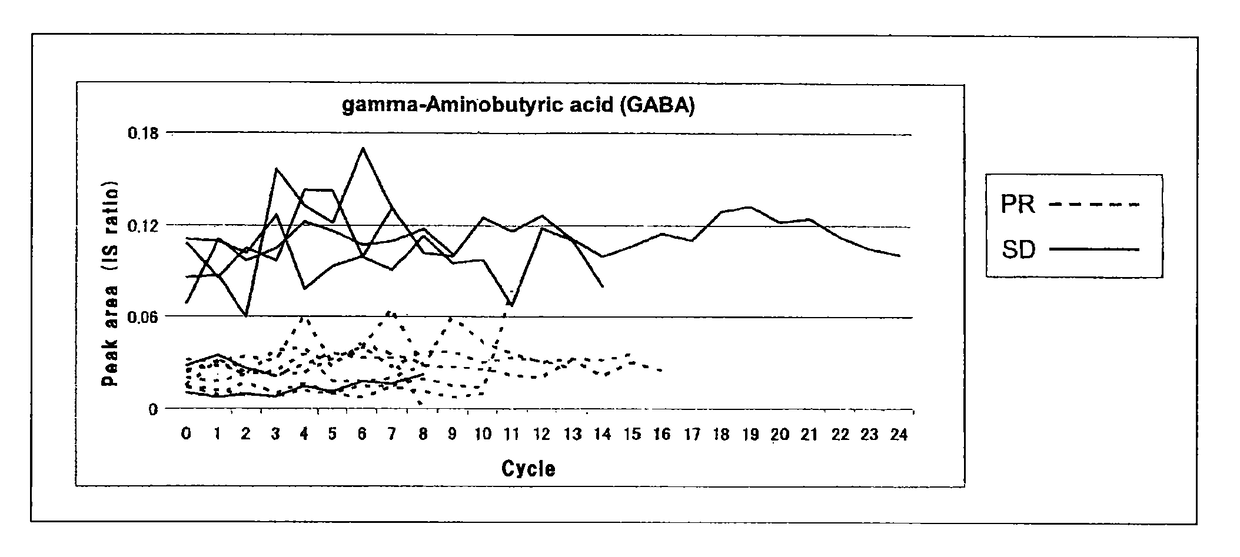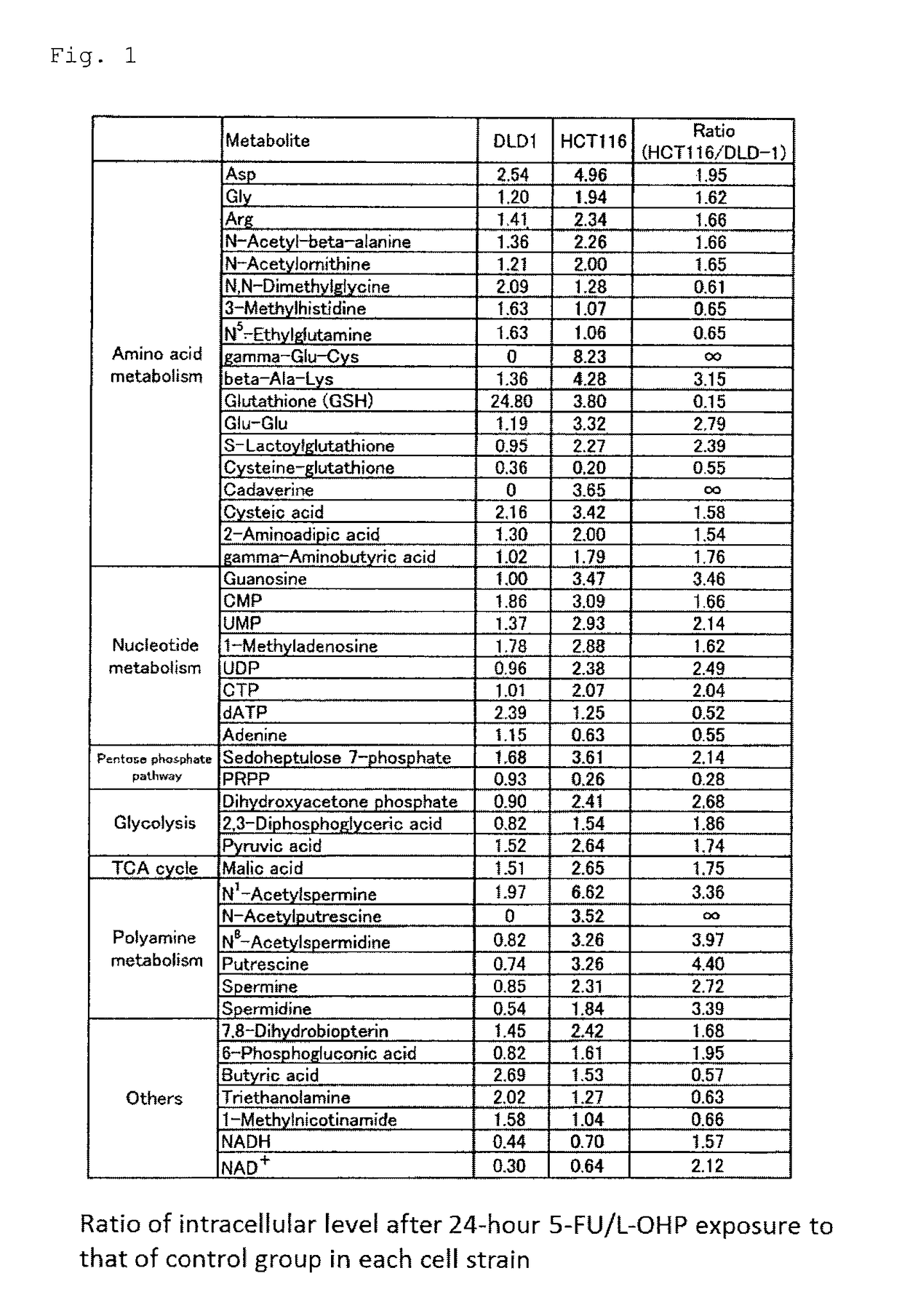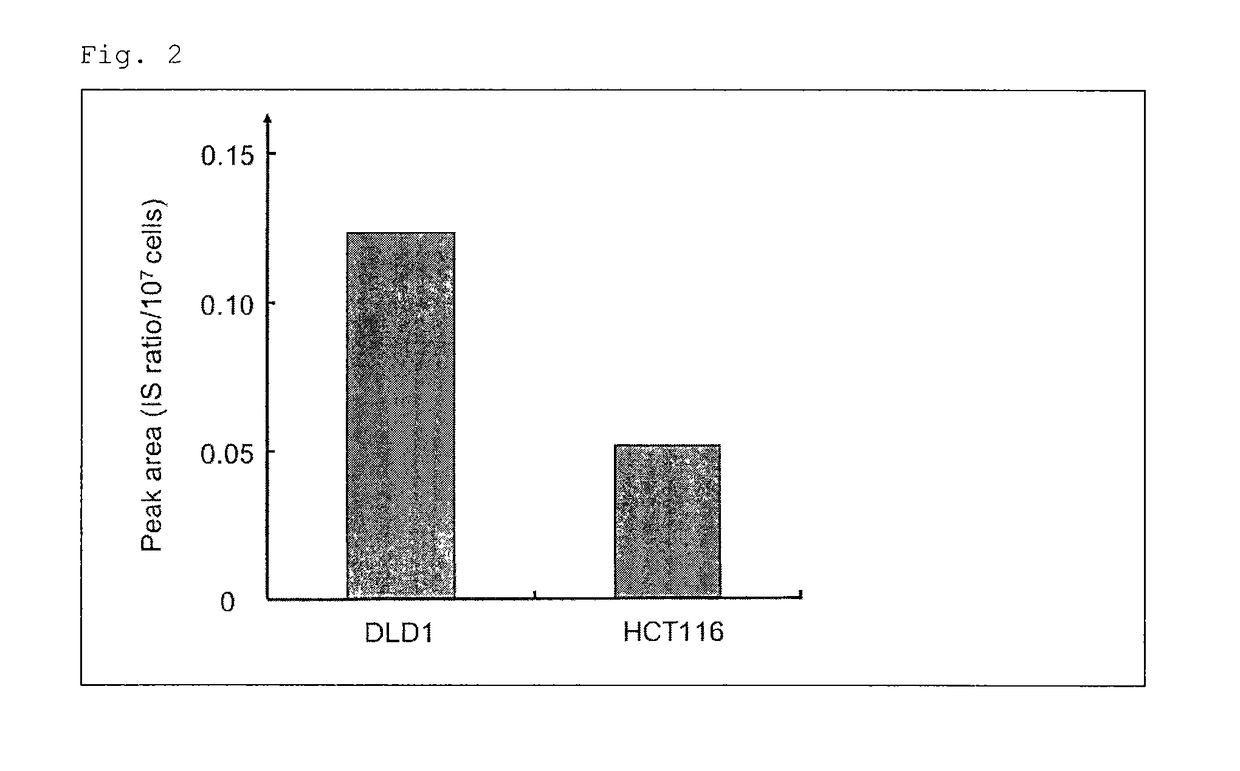Combined anticancer drug sensitivity-determining marker
a technology of anticancer drugs and markers, applied in the field of markers, can solve the problems of low response rate of such chemotherapy, interindividual differences, and ineffectiveness of anticancer agents for some cancers, and achieve the effects of enhancing expected cancer therapeutic effect, and promoting anticancer agent sensitivity
- Summary
- Abstract
- Description
- Claims
- Application Information
AI Technical Summary
Benefits of technology
Problems solved by technology
Method used
Image
Examples
example 1
(1) Method
(a) Cells Employed
[0067]Two human colorectal cancer cell lines (high-sensitivity: HCT116, low-sensitivity: DLD-1) were employed. HCT116 was obtained from Kabushiki Kaisha Yakult Honsha, and DLD-1 was obtained from Dainippon Sumitomo Pharma Co., Ltd. Cell culturing was performed by means of a φ100 mm / Tissue Culture Dish (IWAKI) with a Dulbecco's modified Eagle's Medium (DMEM) containing 10% fetal bovine serum (product of Invitrogen) at 37° C. under 5% CO2 conditions.
(b) Drugs
[0068]L-OHP powder was obtained from Kabushiki Kaisha Yakult Honsha. 5-FU powder was obtained from Sigma Aldrich Japan K.K.
(c) Exposure to 5-FU / L-OHP and Recovery of Metabolites in the Cells
[0069]The two colorectal cancer cells were exposed to L-OHP by changing the culture medium to a medium containing 100 μmol / L 5-FU and 10 μmol / L L-OHP (employing an anti-cancer agent-free medium as a control group). After exposure to 5-FU / L-OHP (0 hr, 4 hr, 12 hr, 24 hr, and 48 hr), the cells were washed on ice with 5...
example 2
Clinical Test of Human Subjects Who Had Received mFOLFOX6-Bevacizumab Combination Therapy
1. Method
[0075]The tested human subjects were cancer patients who had received a cancer chemotherapy (mFOLFOX6-bevacizumab combination therapy) involving administration, in combination, fluorouracil (400 mg / m2) (via rapid intravenous injection), levofolinate (200 mg / m2), fluorouracil (2,400 mg / m2) (via continuous intravenous infusion), oxaliplatin (85 mg / m2), and bevacizumab (5 mg / kg). Second phase clinical tests were carried out in order to investigate efficacy and safety of the cancer chemotherapy and causes for difference therein between individual patients. The tested patients were inoperable advanced / recurrent cancer patients who had received none of chemotherapy, immunotherapy, and radiotherapy. The human subjects were selected on the basis of the following standards: (1) a case having a histopathologically identified colorectal cancer; (2) a case of an inoperable advanced / recurrent cancer...
PUM
| Property | Measurement | Unit |
|---|---|---|
| survival time | aaaaa | aaaaa |
| molecular weight | aaaaa | aaaaa |
| mass spectrometry | aaaaa | aaaaa |
Abstract
Description
Claims
Application Information
 Login to View More
Login to View More - R&D
- Intellectual Property
- Life Sciences
- Materials
- Tech Scout
- Unparalleled Data Quality
- Higher Quality Content
- 60% Fewer Hallucinations
Browse by: Latest US Patents, China's latest patents, Technical Efficacy Thesaurus, Application Domain, Technology Topic, Popular Technical Reports.
© 2025 PatSnap. All rights reserved.Legal|Privacy policy|Modern Slavery Act Transparency Statement|Sitemap|About US| Contact US: help@patsnap.com



